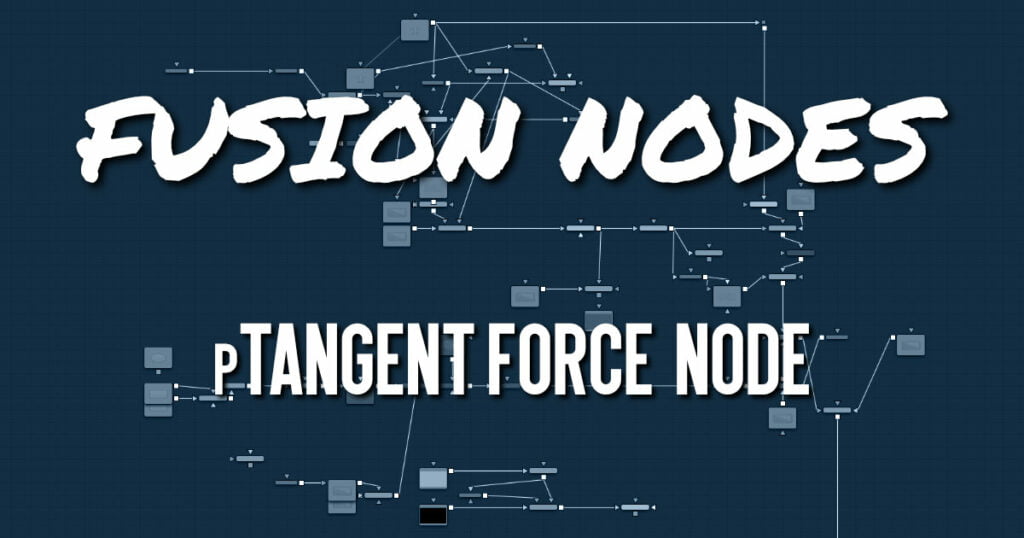Your cart is currently empty!
pTangent Force Node

This node is used to apply a tangential force to the particles—a force that is applied perpendicularly to the vector between the pTangent Force’s region and the particle it is affecting
ADVERTISEMENT
pTangent Force Node Inputs
The pTangent Force node has a single orange input by default. Like most particle nodes, this orange input accepts only other particle nodes. A green bitmap or mesh input appears on the node when you set the Region menu in the Region tab to either Bitmap or Mesh.
- Input: The orange input takes the output of other particle nodes.
- Region: The green or magenta region input takes a 2D image or a 3D mesh depending on whether you set the Region menu to Bitmap or Mesh. The color of the input is determined by whichever is selected first in the menu. The 3D mesh or a selectable channel from the bitmap defines the area where the tangent force effects the particles.
pTangent Force Node Setup
The pTangent Force node is inserted between a pEmitter and a pRender node.
ADVERTISEMENT
pTangent Force Node Controls
The controls for this node are used to position the offset in 3D space and to determine the strength of the tangential force along each axis independently.
Randomize
The Random Seed slider and Randomize button are presented whenever a Fusion node relies on a random result.
Two nodes with the same seed values will produce the same random results. Click the Randomize button to randomly select a new seed value, or adjust the slider to manually select a new seed value.
X, Y, Z Center Position
These controls are used to represent the X, Y, and Z coordinates of the Tangent force in 3D space.
X, Y, Z Center Strength
These controls are used to determine the Strength of the Tangent force in 3D space.
pTangent Force Node Conditions, Style, Region, and Settings Tabs|
All are common to all Particle nodes, so their descriptions can be found HERE.
ADVERTISEMENT










